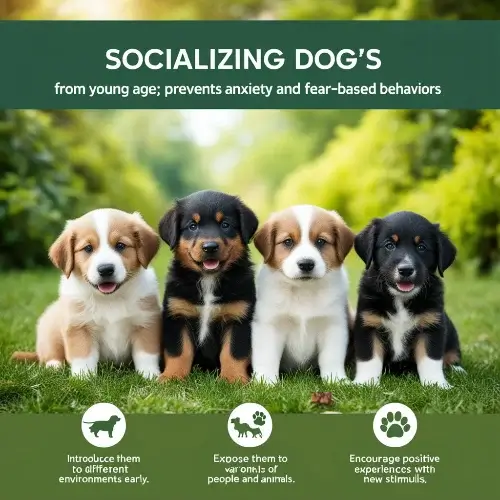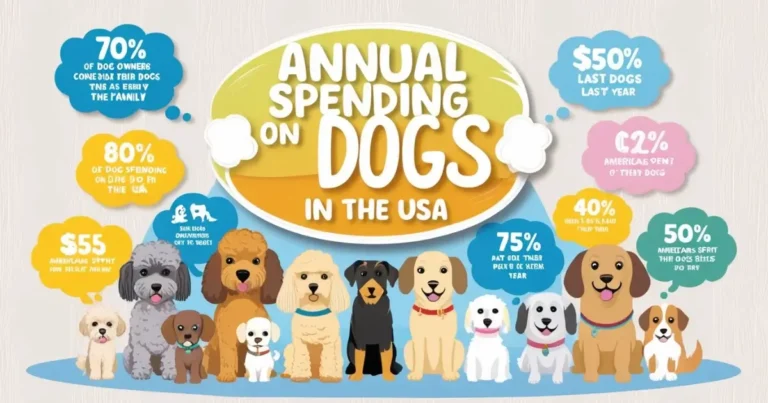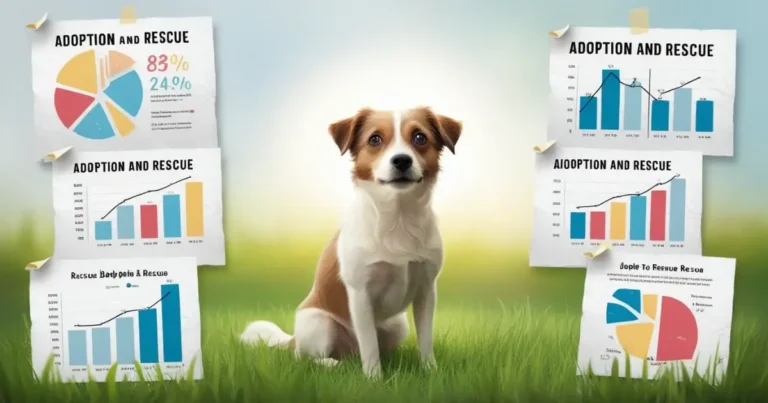Common Dog Behavioral Issues – Causes, Prevention & Training Tips
Dogs are wonderful companions, but their behavior isn’t always perfect. Many pet owners struggle with common dog behavioral issues like excessive barking, separation anxiety, chewing, and aggression. These problems can be stressful, but most have solutions.
Understanding the root causes of behavioral issues helps in training dogs effectively. This guide covers behavioral trends by dog breed, dog aggression statistics, and dog training success rates to help address these challenges.
Table of Contents
Understanding Dog Behavior Problems
Dogs act based on instinct, training, and past experiences. What humans see as “bad behavior” is often a result of unmet needs or miscommunication.
Causes of Dog Behavior Problems
| Cause | Effect on Behavior |
| Lack of Training | Leads to disobedience and bad habits. |
| Anxiety & Fear | Causes barking, aggression, and destructive behavior. |
| Boredom | Results in chewing, digging, and hyperactivity. |
| Poor Socialization | Creates fear-based reactions to people and animals. |
| Genetics | Some breeds are more prone to guarding, digging, or excessive barking. |
Dog Aggression Statistics and Trends
Aggression is a serious common dog behavioral issue. Studies on dog aggression statistics show:
- 4.7 million dog bites occur yearly in the U.S.
- Certain breeds display more territorial or protective behavior.
- Early socialization and positive reinforcement reduce aggressive tendencies.
Aggression often stems from fear, frustration, or previous negative experiences. Proper training helps prevent these issues.

The Most Common Dog Behavior Issues
Excessive Barking
Barking is natural, but too much can be disruptive. Behavioral trends by dog breed indicate smaller breeds bark more than larger ones.
| Type of Barking | Reason |
| Alert Barking | Reaction to sounds, people, or animals. |
| Boredom Barking | Lack of stimulation or exercise. |
| Anxiety Barking | Linked to prevalence of canine anxiety when left alone. |
Solutions:
- Train a “quiet” command.
- Ensure regular exercise and mental activities.
- Reinforce calm behavior with treats or praise.
Separation Anxiety
Many dogs suffer from prevalence of canine anxiety, especially when left alone.
| Signs | What It Leads To |
| Excessive whining or barking | Disrupts household peace. |
| Destructive chewing | Damages furniture and personal items. |
| Escape attempts | Can cause injury. |
Solutions:
- Provide comfort toys or treat puzzles.
- Gradually increase alone time.
- Avoid dramatic greetings or departures.
Destructive Chewing & Digging
Chewing helps dogs relieve stress, but excessive chewing or digging damages property.
| Cause | Solution |
| Teething (puppies) | Provide appropriate chew toys. |
| Boredom | Increase daily exercise. |
| Seeking comfort | Create a designated digging spot. |
Jumping Up & Attention-Seeking
Dogs jump to seek attention, but it can be problematic.
Solutions:
- Ignore jumping behavior.
- Reward calm greetings instead.
- Teach an alternative action, like sitting.
How to Address Dog Behavior Problems
Reward-Based Training Techniques
Studies on dog training success rates confirm positive reinforcement works best.
| Method | Why It Works |
| Treat Rewards | Encourages repetition of good behavior. |
| Clicker Training | Marks correct actions instantly. |
| Ignoring Bad Behavior | Prevents reinforcing unwanted habits. |
Punishment-based training can increase fear or aggression. Rewarding desired behaviors is more effective.
Counter-Conditioning & Desensitization
Fear-based behaviors can be improved using these techniques.
Steps to Reduce Fear Responses:
- Introduce the trigger at a low intensity.
- Reward calm behavior with treats.
- Gradually increase exposure while reinforcing positive responses.
This approach helps dogs become less reactive over time.
Safe Spaces & Supervision
A secure space reduces stress.
How to Create a Safe Space:
- Use a quiet corner or crate with a comfortable bed.
- Ensure children and guests respect this space.
- Avoid forcing interactions with fearful dogs.
Seeking Professional Help
When to Consult a Vet
Sudden behavior changes may indicate health issues.
| Health Issue | Behavior Change |
| Pain or Arthritis | Increased aggression. |
| Hearing Loss | Excessive barking. |
| Thyroid Problems | Anxiety and hyperactivity. |
Veterinary consultation ensures there are no underlying medical causes.
Dog Trainers vs. Behaviorists
For more advanced problems, professional guidance helps.
| Trainer | Behaviorist |
| Focuses on obedience training. | Works on complex issues like aggression. |
| Teaches commands like “sit” and “stay”. | Addresses fear, phobias, and reactivity. |
Certified trainers improve dog training success rates by reinforcing positive behavior patterns.
Preventing Behavioral Problems Before They Start
The Importance of Early Socialization
Socializing dogs from a young age prevents anxiety and fear-based behaviors.

Ways to Socialize Puppies:
- Introduce them to different environments early.
- Expose them to various people and animals.
- Encourage positive experiences with new stimuli.
Breed-Specific Behavioral Challenges
Studies on behavioral trends by dog breed show some breeds need specialized training.
| Breed Type | Behavior Traits |
| Herding Dogs (Border Collies, Australian Shepherds) | High energy, need tasks. |
| Guard Dogs (German Shepherds, Rottweilers) | Protective, require early socialization. |
| Terriers (Jack Russells, Dachshunds) | Prone to barking and digging. |
Knowing a dog’s breed tendencies helps in shaping effective training plans.
Conclusion
Understanding common dog behavioral issues helps pet owners build stronger bonds with their dogs. Proper training, early socialization, and patience lead to well-behaved pets.
A combination of positive reinforcement, structured training, and professional help when needed ensures success.🐶 Need help with training? Start today for a happier, well-behaved dog!
FAQs
Can changing my dog’s diet help with behavioral problems?
Yes, a poor diet can contribute to common dog behavioral issues like hyperactivity, aggression, or restlessness. High-quality food with balanced nutrients supports brain function and emotional stability. Consulting a vet for dietary adjustments can improve your dog’s behavior over time.
What are the best training methods for an aggressive dog?
For aggression, positive reinforcement and desensitization work best. Avoid punishment, as it worsens aggression. Professional trainers specializing in dog aggression statistics recommend counter-conditioning techniques to modify reactions to triggers safely.
Why do some dog breeds have more behavioral issues than others?
Behavioral trends by dog breed show that genetics influence temperament. Herding breeds may nip, while guard breeds can be territorial. Understanding breed-specific tendencies helps tailor training to prevent behavior issues before they start.
How long does it take to fix common dog behavioral issues?
The time varies based on the issue, consistency, and training approach. Some behaviors, like jumping, improve in weeks, while prevalence of canine anxiety or aggression may take months. Patience, routine, and reinforcement speed up success.







